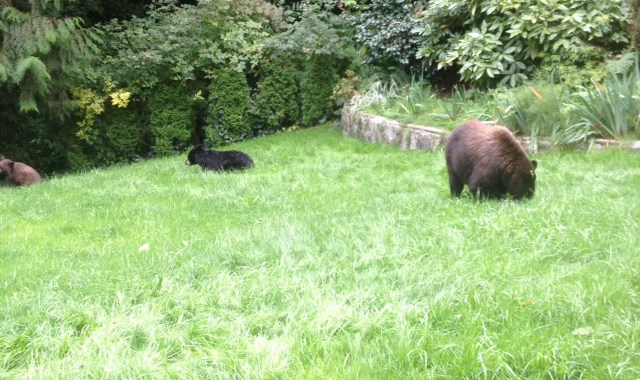The North Shore’s black bear advocate is questioning why two cubs had to be shot by a conservation officer last week, rather than sent to a rehabilitation centre.
Conservation officers trapped and shot a mother and two cubs in the British Properties after the mother had broken into four garages to get access to garbage.
“Their conflict level was too high to be considered good candidates for rehabilitation,” said conservation officer Chris Doyle.
The sow had already been relocated twice. Once in 2013 to a location about 100 kilometres away with two other cubs who never returned and again, within her home range, in 2014.
“It does illustrate some of the pitfalls with relocation and translocation,” Doyle said. “There was a time when, in the South Coast, we were taking some conflict cubs to the rehab facility. ... We’re simply aligning our response to the procedure we’re receiving from provincial biologists and veterinarians.”
But the cubs ought to have been given a chance and taken to be assessed at the Critter Care Wildlife Society in Langley, said Christine Miller, co-ordinator of the North Shore Black Bear Society.
“Why were the cubs not taken to Critter Care? Critter Care has space for them. They’re young enough. It’s not like (the sow) had taken them into people’s houses and taught them to be really terrible bears,” Miller said. “It seems unethical to destroy cubs if a mother has done some property damage.”
Critter Care has taken in 135 bear cubs since it started operating in 2004. Of those, 28 were the offspring of mothers that had been shot because of repeated human conflicts. Only one of the cubs ended up becoming a “problem bear” after release, according to Angela Fontana, senior animal care supervisor.
“People forget how much instinct these guys have,” Fontana said. “We provide them with dens, but every year, they always dig their own. A lot of times, they know how to do these things. It’s just they are too young to be able to fend for themselves in the wild because the wild isn’t necessarily a safe place for an orphan.”
The situation calls to mind the case of former conservation officer Bryce Casavant who became something of a folk hero when he disobeyed his manager’s orders to kill two bear cubs and instead took them to a rescue service on Vancouver Island.
Doyle said he understands why the public gets upset when bears, especially cubs, are killed but, he said, the public needs to do its part in preventing conflicts. “No officer wants to or certainly likes to have to kill cubs. It’s the last thing we want to do,” he said. “What’s frustrating to us is we’re still dealing with the same attractant issues in the same communities. Certainly on the North Shore, garbage and other attractants are readily available to bears in many areas.”
Making things worse is the conditions the bears are facing, thanks to the hot, dry summer. With fewer berries growing in the wild, the bears are hungrier than usual in the final push to pack on calories before winter.
“It’s a really difficult year for the bears and it’s difficult for our officers. It’s putting us in situations where tough decisions have to be made but it’s not over. We’ve got another month probably of this where bears will be looking for non-natural foods,” he said.
That province’s procedure is under review, Doyle said. Environment Minister Mary Polack did not respond to a request for an interview.
Other than keeping their yards free of animal attractants, residents should consider freezing their garbage, Miller said.



